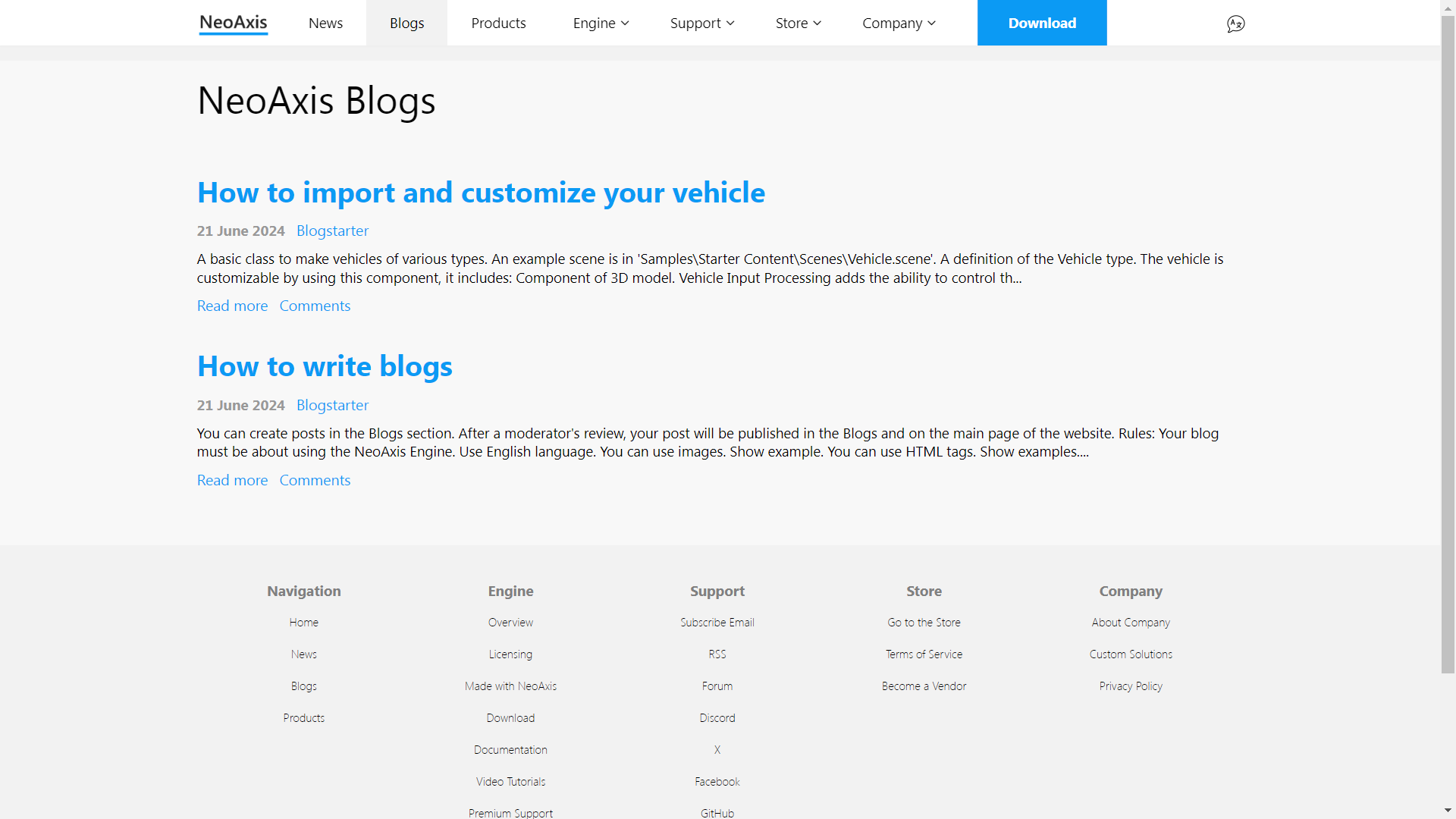You can create your own blogs on the website. Your posts will be published in the Blogs and on the main page.
Rules
- Your blog should be dedicated to the use of the NeoAxis Engine.
- Please use the English language.
- You can upload images and ZIP files.
How does it work?
Create a post in the Blogs section to make a post. After a moderator's review, your post will be published.
What is the structure of a blog post?
A typical blog post can be structured in the following way:
- Title: A catchy and engaging title that grabs readers' attention and gives them an idea of what the blog post is about.
- Introduction: An introduction that sets the tone for the post and provides some background information on the topic being discussed. It should also include a hook to keep readers interested.
- Body: The main content of the blog post, broken into several paragraphs or sections. This is where you provide detailed information, insights, tips, or any other relevant content related to the topic. You can use headings, subheadings, bullet points, and numbered lists to make the content more readable and organized.
- Images and Media: Including relevant images, videos, infographics, or other media can enhance the visual appeal of the post and help engage readers.
- Examples and Case Studies: Providing real-life examples or case studies can help illustrate your points and make the content more relatable to readers.
- Tips or Recommendations: If applicable, offer practical tips, recommendations, or actionable advice that readers can implement.
- Conclusion: Summarize the key points discussed in the post and reiterate the main takeaway. You can also end with a question to encourage reader engagement and comments.
Supported text styles
- Bold text
- Italic text
Strikethrough text
Notes
Note: Use bold text for notes.
Images
Example of attached image.

Code (WIP)
`
/// <summary>
/// Called when value of <see cref="EnabledInHierarchy"/> property is changed.
/// </summary>
protected virtual void OnEnabledInHierarchyChanged()
{
if( EnabledInHierarchy )
parentRootCached = ParentRoot;
else
parentRootCached = null;
if( !EnabledInHierarchy )
_tempComponentListForUpdateAndSimulationStep = null;}
`

